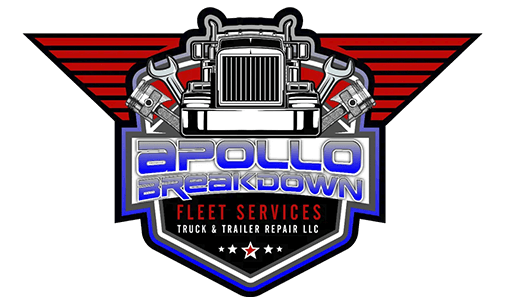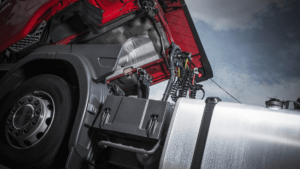Are you tired of dealing with bumpy rides and noisy trailers? In this blog post, we’ll uncover the most common trailer suspension problems and provide you with practical solutions to keep your ride smooth and quiet. Say goodbye to potholes and hello to a smoother towing experience!
¿Looking for professional help? Our team is 100% trained to help you and solve any problem, visit our website now!
Common signs of suspension problems
Suspension problems are common issues that trailer owners may encounter. Being aware of these problems and knowing how to identify them can help prevent serious damage and ensure a safe towing experience. In this section, we will discuss the most common signs of suspension problems and what they could mean for your trailer.
1. Uneven Tire Wear: One of the first signs of suspension problems is uneven tire wear. If you notice that one or more tires are wearing out faster than the others, it could be an indication that your suspension system is not distributing weight evenly. This could be caused by worn-out shocks, damaged springs, or misaligned axles.
2. Excessive Bouncing or Swaying: A properly functioning suspension should provide a smooth ride while towing your trailer. If you feel excessive bouncing or swaying while driving, it could be a sign of worn-out shocks or weak springs. It could also indicate an issue with the alignment of your axles.
3. Difficulty Steering: If you find it difficult to steer your trailer or experience steering wheel vibrations while driving, it could be due to suspension problems. Worn-out shocks or damaged control arms can affect the steering performance and make it harder to control your trailer.
4. Sagging Suspension: Another red flag for suspension issues is a noticeable sag in your trailer’s height when loaded with cargo. This indicates that the springs are worn out and can no longer support the weight of the trailer effectively. Ignoring this problem can lead to further damage and costly repairs.
Causes of suspension problems
This section will delve into the various causes of suspension problems, including overloading, wear and tear, and other contributing factors.
Overloading is one of the most common causes of suspension problems. When a trailer is overloaded with too much weight, it puts excessive strain on the suspension system. This can lead to premature wear and tear on components such as springs and shock absorbers, leading to reduced performance or even failure.
Another significant cause of suspension problems is wear and tear. As with any mechanical system, trailer suspensions are subject to regular use and will eventually experience deterioration over time. Factors such as road conditions, weather exposure, and frequent use can all contribute to worn-out suspension components.
Poor driving habits can also contribute to suspension problems. Driving at high speeds over rough terrain or hitting potholes at high speeds can put undue stress on the suspension system. Additionally, aggressive braking or sudden turns can also strain the suspension components.
Apollo saves you time and money to keep you moving, visit our website here
Types of trailer suspensions
In this section, we will explore the three most common types of trailer suspensions – leaf spring, torsion bar, and air ride – along with their features, benefits, and potential problems.
Leaf Spring Suspension: One of the oldest forms of suspension systems used in trailers is leaf springs. As the name suggests, these suspensions consist of stacked metal leaves that flex under load to absorb shocks from uneven roads. Leaf spring suspensions are cost-effective, simple in design, and easy to maintain.
Torsion Bar Suspension: Torsion bar suspension is a more modern type of suspension system that uses a long metal bar instead of traditional springs. The bar twists when subjected to weight or pressure from bumps on the road, providing shock absorption capabilities similar to leaf springs but with better control over vertical movement.
Air Ride Suspension: Air ride suspension systems use compressed air as opposed to mechanical components for shock absorption. These systems have become increasingly popular due to their ability to adjust air pressure based on load weight and road conditions automatically.
Solutions to common suspension issues such as sagging or bouncing
In this section, we will discuss some effective solutions to address two of the most common suspension issues: sagging and bouncing.
1. Sagging Suspension: One of the most frequent suspension problems is sagging, which occurs when there is a noticeable drop in the trailer’s ride height. This could be due to various factors such as overloading, worn-out springs or shocks, or incorrect installation. Here are some solutions to help you fix this issue:
a) Check Load Capacity: The first step in addressing sagging suspension is to check if you have exceeded your trailer’s load capacity. Overloading can put excessive strain on the springs and cause them to lose their elasticity over time.
b) Replace Worn-Out Springs: If your trailer’s springs are showing signs of wear and tear, it may be time for a replacement. New springs will provide better support and restore proper ride height.
c) Upgrade Shocks: Upgrading your shocks can also help with sagging suspension by providing better support to the trailer’s weight. Make sure you choose shocks that are suitable for your specific trailer model.
2. Bouncing Suspension: Bouncing suspension occurs when there is too much vertical movement while driving, making it challenging to control the trailer’s movements. This problem can be a result of underinflated tires, worn-out shocks or bushings, or improper weight distribution on the axles. Below are some solutions that can help resolve this issue:
a) Check Tire Pressure: Ensure that your tires are inflated according to manufacturer specifications as underinflated tires can contribute significantly towards bouncing suspension.
b) Replace Worn-Out Shocks and Bushings: Worn-out shocks or bushings need to be replaced as they can no longer absorb the shocks from the road, leading to excessive bouncing.
c) Adjust Weight Distribution: Proper weight distribution on the trailer’s axles is crucial for stable and controlled movements. Make sure that the heaviest items are placed closer to the trailer’s center of gravity to avoid imbalanced weight distribution.
Our team is ready 24/7 to assist you, contact us here!
Tips for preventing suspension problems in your trailer
Proper maintenance and regular inspections are key to preventing suspension problems in your trailer. Here are some tips to help you keep your trailer’s suspension system running smoothly.
1. Check the Suspension Components Regularly: One of the best ways to prevent suspension problems is to conduct regular checks on all the components of your trailer’s suspension system. This includes inspecting the leaf springs, shocks, axles, and hangers for any signs of wear or damage. Look for cracks, rust, or loose bolts that may indicate a potential issue.
2. Keep an Eye on Weight Limits: Exceeding weight limits is one of the most common causes of trailer suspension problems. Make sure you know the weight capacity of your trailer and never exceed it. Overloading can put unnecessary strain on the suspension system, leading to premature wear and tear.
3. Properly Inflate Tires: Underinflated tires can cause uneven weight distribution and put additional stress on your suspension system. Make sure to check your tire pressure regularly and inflate them according to the manufacturer’s recommendations.
4. Avoid Rough Terrain: Rough roads and off-road driving can take a toll on your trailer’s suspension system, especially if it is not designed for such conditions. Whenever possible, avoid driving over potholes, rocks, or other rough terrain that could damage your trailer’s suspension components.
Call us for truck repair road service here. We are in Florida, Texas and Georgia. Open 24/7.






